|
Rats and mice in your home are a major health problem. Call (225) 414-2020 today for professional rodent control in the Baton Rouge area. Rodent activity increases dramatically in the fall and winter since they have reduced food and heat sources. Additionally, stay-at-home orders and restaurant closures have rodents scrambling to find new places to eat. Your house has food, water, and heat, making it a nice place for your uninvited guest. As the temperature drops, be on the lookout for signs of rodents.
How to tell if you have mice or rats in your house? #1 - Everybody poops Mice and rats leave a lot of droppings wherever they spend time. Look for them near food packages, in drawers, under sinks, and along any runs where the rodent may walk to get between their water and food sources. #2 - Lots of bite marks Mice and rats chew on everything. Look for bite marks on food and on the walls and cupboards of your home. Little marks for mice. Big marks for rats. #3 - It stinks Rodents give off a stale smell. If you have a pet cat or dog that takes a sudden interest in a spot in your home they never cared about before, its worth searching for rodents. Pets can smell things you can't, so they will start behaving strangely first. If you can smell it, the problem may be a full rodent infestation. #4 - Noises and scratches You can hear scratching, gnawing, squeaking, and chirping. Rodents move around and make a lot of small noises. If you hear new noises in your walls or attic, alert your pest control professionals to handle the rodent problem #5 - You see their nest If you see a nest in your home made of shredded paper, plants, and other things, you're staring at a rodent nest. The only more obvious sign is if you outright see one scurry in front of you.
9 Comments
Spring is nature's alarm clock for insects. As the days start warming up, the bugs being coming out. Most of the insects that show up this time of year don't really bother anyone. We will be covering a few here that do.
Mosquitoes Everyone's least favorite pest. These little buzzers are the deadliest human hunters on the planet. Contrary to popular belief, mosquitoes' primary source of food comes from plants. The females only start hunting for blood when they reproduce. The blood they take from you or other roaming creatures allows them to reproduce more rapidly. The extra mosquitoes in turn hunt you down when reproducing and make even more mosquitoes. There's a pattern here. To reduce this mosquito population boom, do the following for mosquito control:
Ants Ants start appearing more often this time of year. They are looking for food and your house has plenty. A good pest control company can inspect your home for better ways to reduce ant problems. Sanitation is the key to keeping these bugs out of your home.
Wolf spiders Wolf spiders are often confused with brown recluses. This is because they are also brown and a spider. Unlike brown recluses, wolf spiders are not a cause for alarm. Wolf spiders usually live in solitude. They do not spin webs. They keep their children on their back until they go out on their own. A huge plus to wolf spiders is they keep other insect populations in check. If you have a lot of wolf spiders, it could mean there is an underlying insect problem waiting to be discovered. Treating their food source is the best way to get wolf spiders an eviction notice. Mice can be invasive and destructive to your home. While they can be a common pest, many people may not know very much about them. By being informed about their habits and abilities, you can be better prepared to keep them out of your home. Rodent control can be entirely possible, but it can’t occur unless you’re aware that your home may have a pest problem. Here are 10 facts you can use to help identify and control intrusive mice. 1. Mice can be found nearly everywhere
Mice can live in almost any type of environment and can be found all around the world. While they can easily survive in the outdoors, they often invade homes to take advantage of the plentiful food they can find there. Mice living outdoors generally burrow into the ground while mice living in a house or other building can nest in the walls or other nooks and crannies. 2. Mice have ever-growing teeth Mice have large front teeth specially equipped for gnawing. Strangely enough, these large incisor teeth never stop growing, which can be what allows mice to constantly chew through things without wearing their teeth down to nothing. Mice share this trait with many other rodents, including rats. Since they need to keep their teeth from growing too big, mice constantly chew on anything that’s available, making them destructive to homes. Seeing signs of items that have been chewed on can be a red flag that you may need to look into Baton Rouge pest control. Mice can chew on nearly anything, including:
3. Mice can fit through really small spaces You may think your home is mouse proof, but it can be important to double check that every small gap has been covered. Mice can squeeze their bodies through tiny holes and, in some cases, are able to fit through spaces as small as the width of a pencil. Some common entry points used by mice can be the spaces where the wall meets the ceiling, gaps under doors, or even drains in bathrooms. You can use a combination of foam sealant and wire mesh to fill in gaps and help keep mice out. If they still seem to be getting in somehow, you might need to look for help from a Baton Rouge pest control service. 4. Mice can jump incredibly high While they may be small, mice can still be incredibly agile. In some cases, they can jump as high as 25 centimeters straight up. This ability can help them reach high places, allowing them to get into your home and access seemingly hard-to-get-to food in pantries and cupboards. 5. Mice can climb surprisingly well In addition to being great at jumping, mice are skillful climbers. Their sharp claws and strong feet can allow them to scale challenging surfaces such as vertical walls. Even food that seems entirely out of reach to mice may not be safe as you think. Their climbing skills can also allow them to access the attic and roof of your home and hide in places where you might not expect them to. Baton Rouge pest control can help you to ensure that mice aren’t hiding out in the top of your home. 6. Mice don’t rely on sight Mice can have poor eyesight, especially in bright light. Since they are nocturnal, their eyes can work best in the dark, but even then, it isn’t very good. This doesn’t hinder them too much though as their other senses, especially hearing, can be incredibly acute. Mice can hear things that are out of the range of human hearing and can even communicate with each using ultrasound noises. They can also feel vibrations around them and use this ability to sense potential predators coming from a distance. 7. Mice love to eat Mice are almost constantly in search of food, and they can eat a surprising range of things in your home. They can eat both plants and meats, and this omnivorous diet allows them to devour just about anything they find. From cereals and grains in your pantry to crumbs that fall under the kitchen table, food can be what draws mice to your home in the first place and can keep them surviving there for a long time. It can be important to look into Baton Rouge pest control to stop a mouse problem from getting out of control. 8. Mice have specific habits Almost all mice can behave in a similar way. They have specific habits that can help you find and catch them. When they move throughout your house, they will generally stay close to walls, traveling along the edges of the room. Mice are mostly active at night and won’t usually come out into the open during the day. While they can be social towards other mice, they are also territorial and can need to have a large area to themselves. 9. Mice are dirty Mice can not only cause problems by chewing on your stuff and leaving behind droppings, they can also pose a real risk to the health of anyone around them. Mice can carry all kinds of diseases that can be transmitted to humans. Diseases carried by mice can include:
Some of these conditions can be life-threatening. Risk of disease can be the number one reason why it is vital to get help from a Baton Rouge pest control service if your home has been invaded by rodents. 10. Mice can be gotten rid of Luckily, rodent control can be accomplished with the help of pest control experts in Baton Rouge. By noticing the signs that your home may have a mouse problem, you can be one step closer to solving that problem. Preventative measures, such as sealing off easy mouse access points into your home, can help lessen the risk of a new problem developing. Being well-informed as well as prepared to get help if needed can the best way to keep your home safe from these scurrying, destructive pests. A peculiar pest, silverfish may be spotted scurrying around in the middle of the night, looking for somewhere to hide when startled. Their long bodies and wave-like motion strike some as creepy and alarming, but they’re more of a threat to your home than to your family and pets, barring allergic reactions. Still, this unfamiliar critter can be a cause for concern. If you find signs of an infestation, calling a Baton Rouge pest control company sooner rather than later is a good idea to save personal belongings from potentially serious damage. What Is a Silverfish?
The silverfish (Lepisma saccharina) is a small, grayish-blue insect with a slender body shaped somewhat like a flat carrot and measuring about 1 inch in length. Its name comes from the almost silver-colored shimmer to its scales and its swift, undulating manner of movement that resembles a fish swimming. It also goes by such names as “fishmoth” or “carpet shark”. Its life cycle has three stages - egg, nymph and adult, lacking the pupa phase that many insects go through. Young fishmoths have a white coloration and lack scales. Adults can lay eggs at any time of year, with no specific mating season, and the development from egg to adult takes place over about three to four months, though some can live as long as six years. What Makes Their Habitat? Silverfish fleet of foot on their six legs, but they lack wings and are not adept climbers. They also tend towards a nocturnal life, so during the day, they will likely be hiding in various cracks and crevices. They prefer dark environments with moderate temperatures and plenty of moisture; they’re likely to gather around plumbing fixtures, especially with leaky pipes, and can also be found in attics, basements, bathrooms and kitchens. Another major attractor is, of course, food - they’re not picky eaters, and most proteins, sugars and starches will attract them, leading to a variety of potential meals around the house. What Are the Risks of Infestation? The dietary habits of silverfish make them a nuisance when they take up residence in your home. Their fondness for starch and sugars both simple and complex leads them to eat glue, paper, fabric and even the cellulose found in personal hygiene products such as shampoo and shaving foam. They also feed on dandruff and human hair - again, this is a factor in their attraction to bathrooms. The infestation escalates past mere nuisance and becomes a threat to your home, though, when they start digging into personal belongings. Left unchecked, carpet sharks will eat book bindings and pages, photos and more, especially wreaking havoc on items in storage in an accommodating attic or basement. They also chew holes in wallpaper and start eating the paste behind it, handily destroying wall decor. Silverfish do not bite and have no diseases they’re associated with that can be communicated to humans or pets. An encounter with one can be creepy or disturbing - especially when it crawls out of a sink drain or gets into your toothpaste - but for most people, no further harm comes to them at the hands of this insect. However, respiratory allergies can be aggravated by inhaling their eggs, scales or feces, as well as parts of dead insects. Any of these can mix with other forms of dust in your home. Specific allergies to these bugs are triggered by tropomyosin, also found in shrimp and other shellfish, and can produce even harsher reactions such as rhinitis - irritation and inflammation of the mucous membrane in the nose - or bronchial asthma. Children can be especially susceptible. How Do You Find an Infestation? As with any other pest problem, the sooner you identify a fishmoth or carpet shark infestation, the better. The nocturnal habits of these insects make actually encountering one a little difficult, but not impossible. That said, spotting a silverfish is a certain sign of a larger infestation, since they proliferate so quickly that an individual straggler is unlikely to truly be alone. Droppings are also decisive evidence, and they are easily identified by a unique appearance resembling small black pellets or peppercorns. These will be commonly found wherever the insect is likely to feed - pantries and food boxes are obvious enough, but they may also be found among books and papers since fishmoths feed on these as well. Shed skins and scales, as well as unusual yellow stains, also mark the passage of these pests, and a diligent eye can pick them out if you know what to look for. Though less ideal as a first sign of infestation, damage to your home and possessions can be conclusive evidence. Silverfish will chew holes through paper, books, cardboard boxes and wallpaper to get to the cellulose and glue they enjoy, and they also burrow into boxes or containers filled with cereal, oats, flour or sugar. A particularly bad infestation can lead to them eating laundry and linens too. Catch the infestation early enough, though, and you won’t have to worry too much about extensive damage. What Can You Do? Preventing an infestation yourself is significantly easier than trying to get rid of pests without professional assistance. The main goal is to make your home unappealing for silverfish to move into. Filling in cracks and crevices is a good start, not only blocking their entry into your home but also removing hiding spots. A dehumidifier is also useful, keeping your home dry to deprive the bugs of moisture. Fixing leaky pipes swiftly also reduces moisture. Spread scents that the insects hate in areas where they would normally congregate, such as bathrooms and kitchens - these include cinnamon, cloves and cedar shavings. To remove an established population of silverfish, calling on professional Baton Rouge pest control is the optimal solution. Pesticides and other chemicals can be hazardous to the health of your family if improperly used, and tracking down the nest can be considerably harder than finding the signs of a nest in the first place. Trained professionals have the tools and know-how for the job and are ready to cooperate with you to investigate and construct a plan for safe and thorough extermination. When it comes to pest control in Southern Louisiana, there may be a number of different critters and insects you are looking get rid of. One of the most disturbing flying pests found active throughout the state, especially during the summer months, are wasps. Though wasps do provide benefits to the ecosystem they habit, for humans they pose risks of stinging, which is not only painful but can also lead to dangerous allergic reactions and anaphylactic shock. If a wasp nest is not in a location that greatly disturbs human activity, it is best to avoid it and tolerate it as best as possible. If there are many human-wasp interactions, however, it may be time to look into professional wasp control. Before you enlist an extermination team, learn more about the habitats, dispositions, and food sources of these stinging insects with the following wasp facts. Difference Between Wasps and Bees
When identifying insect species for pest control, it is important to make sure you are dealing with wasps rather than environmentally essential honeybees. One of the main differences between wasps and bees is why the former is considered a pest, and that is the wasp’s temperament. Wasps are known to be much more aggressive than bees. In terms of physical traits, wasps have longer, more slender bodies with narrow waists. Additionally, while both bees and wasps drink nectar, wasps are unable to turn that nectar into honey. Similarly, most wasp species do not pollinate, although there are a few species known to contribute successfully to plant pollination. Types of Wasps It may surprise you to learn that both hornets and yellow jackets are actually types of wasps. All are typically much more aggressive than bees and are a target for rapid pest control. Hornets live in large, highly organized colonies. Their main physical distinctions are their size, which is typically much bigger than other wasps, and their coloring, which is usually black and white or reddish-brown. Yellow jackets are noted for their bright yellow and black markings. Unlike other types of wasps, however, yellow jackets often build their nests low in trees and bushes along wooded regions. They are often highly aggressive and may sting repeatedly. Wasp Nests The ultimate goal of wasp control is to eliminate the nest. This should only be done, however, if it is causing a persistent problem for humans in the vicinity, as tampering with the nest is in itself a risky action. Wasps are highly defensive and protective of their nests and will usually swarm to defend it. They tend to build these colony structures in locations that are not easily visible to humans, which can lead to surprise encounters, aggressive wasps, and painful stings. Most wasps build their nests out of paper-like material or mud in such places as under the branches of trees, attic rafters, window and door frames, under deck or porch floors, house eaves, porch ceilings, and under railings. When wasps begin to die off during cooler weather, their nests are deserted and are usually not reused by subsequent generations. Wasp Colonies Within a nest, colonies may contain between 1,500 and 15,000 wasps, depending on the species, all populated by a single reproductive female. Pest control seeks to eliminate the nest, effectively destroying the colony. Each colony typically includes three kinds of wasps: the queen, the female workers, and the male drones. The queen lives for approximately one year and will hibernate in the winter to emerge in the spring, usually around May. The female workers live for about three weeks, while the male drones may live slightly longer than their female counterparts, and their main purpose is reproduction. Wasp Food Sources Like bees, wasps are drawn to sweet food sources, such as nectar, honey, sugar, and fruit. In fact, they have been known to occasionally steal large quantities of honey from beehives. Because of their diet, wasps tend to build their nests near picnic sites, outdoor patios, or any places with open garbage cans. Initial stages of pest control can include changing human habits to keep an area cleaner and free of wasp food sources. In addition to sweets, however, some species of wasps also feed on other insects, both living and dead. This means they can keep your garden free of other pests and are actually beneficial to the growth of flowers and other plants. Wasps Inside Indoor infestations are serious occasions for professional pest control. Luckily, wasps do not usually come into homes purposefully, except for a queen looking for a roost to hibernate through the winter. If a nest has been built near a window, door, or exposed crack, then wasps may begin to fly in and out of your home looking for food. Sometimes, however, wasps may build their nest inside an exterior wall, with access via a small hole or crack. When homeowners see wasps flying in and out of this crack, they tend to seal it up, often inadvertently trapping wasps inside the house. They may then begin to chew through the wallboard and infest your home. Wasp Stings Wasp stings are one of the biggest threats of infestations and one of the prime reasons to call in professionals for pest control. Unlike bees, wasps do not die when they sting you, nor do their stingers stay in your skin, but their poison can be potent. Wasps also inject a chemical with their sting that makes you more easily detectable to other wasps, which is why it is especially important to avoid wasp nests and their swarms. Quick treatments for wasp stings include washing the wound with warm soapy water, reducing any swelling with ice, applying an antiseptic, and taking painkiller or antihistamine to reduce soreness or itchiness. If you are stung and start showing signs of a serious allergic reaction, it is imperative to see a doctor immediately. With this collection of wasp facts, you can be better prepared to recognize a potential infestation. Pest control is an essential mitigation strategy for keeping your home or office space a healthy living environment for humans and other non-pest species. While wasps provide some benefits to nearby gardens, if their aggression becomes intolerable, be sure to contact your local exterminator for effective wasp control. As the name suggests, powderpost beetles can reduce wood to a fine powder given enough time. These bugs are more than just a nuisance and can cause serious damage to your property and belongings. Learning more about these insects can help you determine when to contact Baton Rouge pest control professionals to avoid further wood damage. What Are Powderpost Beetles?
There are 70 species of woodboring insects known as powderpost beetles. These pests target deciduous trees, and depending on the species, they can attack hardwood and softwood varieties. Most species of powderpost beetle share a few characteristics. In their adult form, the beetles don’t usually cause much damage to the wood. It’s when an adult lays its eggs on exposed wood that the larvae can cause problems. The larvae create tunnels and galleries in the lumber as they take in nutrients and grow. As they feed, they leave behind frass, also known as wood powder. The frass may be compacted together, sticky or left loose and powdery. Depending on the species, the larvae can spend months or even years inside before emerging. It’s only when they tunnel out as adults that you realize you have an infestation and need a pest control service. True Powderpost Beetles The adults of this species are very small, less than a one-fourth of an inch. Their coloring is a reddish-brown, and they appear slightly flattened. This species prefers wood with a high moisture content. Lumber with a moisture content of less than 6 percent can help discourage true powderpost beetles from feeding on the material. These insects feed on the starch, sugar and protein of hardwood and sapwood tree species. Oak, hickory, cherry and walnut flooring, as well as antique furniture, can be frequent targets of true powderpost beetles. Deathwatch Beetles The name of these beetles is attributed to the ticking or tapping sound they create to attract mates. The larvae of deathwatch beetles, while quite soft, are still able to consume both hardwood and softwood. The frass of these beetles is compacted into pellets in the various tunnels and galleries inside the wood. Adults range in size from one-fourth to three-eighth of an inch long. Get in touch with Baton Rouge pest control professionals if you believe the repeated tapping sounds coming from the rafters are deathwatch beetles. False Powderpost Beetles False powderpost beetles are reddish brown to black in coloring. Unlike other species, the adults drill into the wood to lay eggs, leaving behind a hole larger than one-eighth of an inch in diameter. After the larvae mature into adults and emerge, the exit holes do not contain the powdery frass, but the galleries and tunnels inside the wood do. The frass tends to stick together and is compacted. Round-Headed Borers or Longhorn Beetles These beetles tend to infest dead or dying trees, though a few species attack living trees. A frequent cause of indoor infestation occurs when firewood is brought in from the outside. The adults range in size from one-half to three inches long, and the larvae can be one-half to four inches in length. Most species can be characterized by their long antennae while just a few species have short antennae. Some of the species also mimic the coloring of wasps, ants and bees; however, most of the species have coloring that matches their environment. Contacting a Baton Rouge pest control service can help you identify the species of round-headed borer or longhorn you are dealing with. Assessing Active Infestations and Inactive Infestations Knowing whether your lumber is actively infested is an important step in addressing your wood damage. Sometimes, an infestation can die out without your intervention. Chances are you are dealing with an active infestation if the color of the frass resembles fresh cut wood. If the exit holes look weathered and match the rest of the wood, it’s more likely that the infestation is an old one. If your wood is in an area with some air movement, the very presence of any wood tailings can be a sign of a recent infestation. Conversely, if your wood is in an area that has not been disturbed recently, a layer of film or dust over the frass can indicate a dead infestation. One way to check if you have an active infestation is to remove the frass and recheck the area in a few days. If there are new piles, you could have an active infestation. It’s important to remember that most active emergences occur through the months of April to July. Determining whether you have an active or inactive infestation can be a difficult assessment to make on your own. Pest control professionals can assess the wood damage to see if the larvae are still present. Prevention and Treatment Strategies Preventing powderpost beetle infestations before they begin can save you trouble down the road. If you have yet to make a lumber purchase, inspect it for signs of infestation. The following are tips that can help discourage infestation if you’ve already bought the lumber:
Finding the bored-out holes and wood damage from powderpost beetles can be a distressing experience. Given enough time, these pests can cause a considerable amount damage to your home and property. However, by following a few preventative maintenance tips, you can lessen the chances of wood damage from a powderpost beetle infestations. If, however, you’re facing an infestation beyond your expertise, contact a pest control company today. It is termite season in Baton Rouge. While termites are active all year, they become very active right around Mother's Day. (Sorry Mom!) It is the right mix of temperature and humidity for termites to leave their home and seek out a new place to move. We call it swarming. Termite swarming can be as simple as seeing a few termites flying around a light post. Other times it can be down right frightening like walking into a room of your home buzzing with flying termites. If this is you, don't freak out just yet. Termite swarmers to not necessarily mean you have a termite problem in your place. Get a Baton Rouge based pest control company to do a thorough termite inspection on your home. How to Look for Signs of Termites Wings - Look for loose wings lying near sources of light. Termite swarmers are drawn to light sources at night. Once they can to these locations, they can drop their wings and look for both a food (wood) and water source. Flying Termites - Obvious, but these can be confused with flying ants. Capture a few in a container so you can show them to your pest control company representative. Wall Pin Holes - Small pin sized hole in your wall may be termites. Look for frass and dirt at the hole or on the ground beneath it. Termite construct tunnels, but need to get rid of what they don't want in the tunnels. Mud Tunnels - Check around the foundation of your home. A hardened mud tunnel going from the ground to your home along the foundation is sure sign of termite activity. It could be an old tunnel, so your pest control technician will check for damages to your home. Weak Spots - Termites eat away cellulose in wood. This can lead to weakened areas and creaking in flooring and cabinets. Bubbling Paint - Raised areas in paint can be a sign of termite activity. This can be from termite disposing of frass from beneath the paint. Instead of the frass falling to the ground, it stores behind the paint instead. Termites are very prominent in south Louisiana. If you think you may have termites, contact Bug Ninja Pest Control today for a free termite inspection. You can also get your home under termite contract to prevent termite damage in the first place. You may sometimes see armadillos on the roadside after a fatal encounter with an automobile. You may also see evidence of their presence in your yard or garden. Pest control strategies needs to include methods to manage these invaders. Understanding the animal and its habits can make critter control more effective, reducing or preventing the damage armadillos can cause to your property. Armadillos 101
The nine-banded armadillo moved north out of Mexico in the late 1800s and was introduced into Florida by way of specimens that escaped from private zoos and traveling circuses. Its range has continued to expand northward but may be curtailed by climate. Armadillos have made a well established home in Baton Rouge, Louisiana.
Armadillos have sharp claws that help them dig their dens. They prefer moist soil close to where they feed, often near creeks and other bodies of water. They have few natural predators in the United States, can live 12 to 15 years and reproduce quickly. Armadillos are nocturnal, usually coming out around dusk to dig for grubs and insects. A single armadillo may have as many as 12 burrows in its territory. Individual burrows can measure up to eight inches wide, seven feet deep and as much as 25 feet long. Burrows have even been found to extend under the foundation of homes. Pest control for armadillos often becomes necessary when they invade gardens and ornamental beds in their hunt for food or shelter. Telltale signs of their presence include uprooted but uneaten plants, holes in your yard and sometimes even damage to sidewalks or driveways caused by their burrowing activity. You may also see footprints or hear scraping sounds beneath structures. Critter Control Strategies Take a multifaceted approach to protecting your property from damage by armadillos to give you the best chance of success. Implementing these ideas can build a defense that achieves your objective. 1. Remove as many armadillo-tempting features as possible from your yard. Effective pest control involves making your property unattractive to armadillos. Characteristics that armadillos find enticing can include overgrown areas and wood piles that offer protection. Also trim shrubbery away from your house, and block entrances to areas under your house, porch or deck. While the preferred diet of nine-banded armadillos consists of insects and grubs, they will occasionally eat some types of produce. If fallen fruit from plants or trees is left on the ground, it can provide a nice supplement to the armadillo diet. Clearing food sources and reducing opportunities to find shelter can be the first step in your campaign. 2. Determine the strategies to use. The effectiveness of different approaches is an important factor in deciding what to do next. Your particular situation and preferences also play a role in making this decision.
3. Maintain your armadillo-free yard. Once your armadillo infestation is under control, you’ll want to make sure you don’t erode the progress you’ve made. These ideas can reduce the effects of these animals' damage and help you make their return unlikely:
Armadillos may be funny critters to watch, but they can be trouble for a yard or garden. Their burrowing as well as their eating habits makes pest control an important component of maintaining your property and preserving its value. If you need pest control service in Baton Rouge, contact us today. How Pests Can Bug Your Property Management Business Though most pests are small, they can have a huge impact on your property management business. Unfortunately, that impact may be mostly negative. Bedbugs, mites, mice, rats, cockroaches…these are all words that can make current and potential residents run for the hills. If you want to keep your business lucrative and your clients happy, you need to invest in property management pest control. If you aren't entirely convinced that you need such services, consider the consequences of not investing in apartment pest control. 1. Pests Cause Extensive Property Damage
Termites, rat and mice are the biggest culprits of property damage, but they’re not the only ones. Pests can live inside walls, chewing up foundation, drywall, insulation and electrical wiring and compromising the overall integrity of your building. If you want to keep your building up to code and in safe condition for residents, you need to get rid of the wall dwellers. Baton Rouge pest control experts can help identify the critters causing the problems, locate nests and hiding places and exterminate the pests before they cause additional damage. By investing in the right services, you may save yourself thousands of dollars in property damage repair costs in a given year. 2. Pest Bring Down Property Value Some property managers don’t bother with pest control efforts because their client plans on selling in the near future. This is a huge mistake. If inspectors discover pests living on or within the property, they may either reduce the value of the property or require the property owner to remediate the issue before listing. The longer remediation is put off, the worse, and therefore costlier, the damage can become. Help maintain the value of the property you are tasked to manage and invest in property management pest control services. 3. Pests Are Unhealthy Many pests, including rats, mice and bedbugs, can severely compromise the health of your tenants and their pets. Rats carry dangerous diseases that can be spread via food or even rat bites. Bedbugs can cause unsightly sores and infections, and cockroaches and flies can contaminate food and surfaces with diseases transported from other locales. Failing to implement pest control is not only careless, but it can be a liability issue if a tenant becomes sick or injured because of your negligence. Negate any liability issues and invest in apartment pest control on behalf of your client. 4. The Presence of Pests Can Harm Your Reputation You may think that you are saving money by negating property management pest control services, but the truth is that you are doing more financial harm than good. Once word gets out that pests are on your property and that you have not taken any measures to eradicate the issue, tenants typically begin to move out and units can remain empty. Nobody wants to live in a complex or home that has pest problems and is maintained by an uncaring landlord. Preserve your reputation with tenants and your community by investing in Baton Rouge pest control services as soon as an issue is brought to your attention. 5. Pest Complaints Put You in Reactive Mode When it comes to maintaining any business, proactive is better than reactive. Once you are reduced to only reacting to problems, you become unable to move your business forward. This is not good for you or your client. Avoid falling into catch-up mode and pre-emptively invest in property management pest control services. The services you hire can work to keep your property pest free while you focus on more important business matters such as finding residents and keeping units full. 6. Pest Problems Are Almost Never Minor Have you ever heard the saying that for every rat you see, there are 10 more behind the walls? Such a saying is true with most pests. Creatures like rats, termites, cockroaches and bedbugs often only make their presence known when there is nowhere left to hide. If a tenant saw a rat, you can count on there being dozens more living in the very infrastructure of your building. The best way to stop a pest infestation is to ensure that it never gets to the “infestation” phase. Apartment pest control services can look out for potential issues such as nests, eggs and hatchlings and eliminate them before they become full-blown infestations. 7. A Pest Infestation Is Costlier Than Pest Control Too many property owners consider pest control an expense when in actuality, they should view it as an investment. Most property management pest control companies offer their services on a quarterly basis. They do this to keep seasonal pests at bay and to prevent infestations by eliminating problem areas. The total cost of annual preventative pest control services should be relatively low, even for full apartment complexes. Reactive pest control services and maintenance, however, is much more expensive. Not only will you have to enlist the help of exterminators and extermination equipment, but also, once pests are present, you may need to hire a building inspector to inspect for major structural damage, and contractors to repair said damage. Most exterminators require several visits to kill an entire pest population, which could increase your total remediation costs. In addition to having to pay for the damage itself, you may find yourself saddled with regulatory fines for failing to maintain a habitable structure. If any of your tenants or employees contracted an illness or disease because of the problem, you may be forced to deal with a liability lawsuit, which could end up in more fees and costs. While property management pest control may not be at the top of your list of priorities, especially if you don’t yet have a pest problem, it should be. Invading bugs and critters are not only annoying to deal with, but they can be detrimental to both your profit and tenants’ health. Don’t risk tenants’ health, your buildings’ structures or your bottom line, and invest in apartment pest control services today. A Baton Rouge pest control company can help prevent infestations, eradicate existing ones before they become too costly and preserve the overall integrity of your building. Topping every other city in the survey, 41 percent of New Orleans households reported seeing cockroaches within the house, according to a Bloomberg compilation of 2015 American Housing Survey data. Roaches and other common pests are frequently found in warm, humid climates. If pesky cockroaches are present, there are most likely additional types of pests residing in dark crevasses throughout the home. New Orleans pest control takes ongoing commitment and dedication to keep buildings free from these unwanted inhabitants. Pest-proofing a structure is often one of the best ways to keep bugs out of the home. It can be easier to keep them outside compared to getting them to move back outdoors once they have taken up residence in your home. Below are seven helpful tips for pest-proofing any structure. The equipment referred to is typically available at local hardware or home improvement stores. 1. Repair Door and Window Screens
Repairing door and window screen tears or gaps is one of the first steps to take when making New Orleans pest control efforts. These holes can allow entry of mosquitoes, flies, gnats or other insects into the home. Even after eliminating any openings, some insects may be small enough to fit through standard mesh window screens. Denying entrance to these tiny bugs may mean that windows must be kept closed during certain times of the year. 2. Apply Caulk to Cracks Cracks can form around doors, fascia boards, windows, or other surfaces on the outside of the home. A high-quality acrylic latex or silicone caulk can plug those holes to keep insects out. Latex-based caulks clean up easily with water. Caulked surfaces can be painted to match the surrounding area. For those with less experience, caulks that are clear after drying can be easier to use because mistakes will not show as well. Before sealing a crack, clear it of any peeling substances. For a clean look, apply the caulk bead to the surface and smooth it with a damp rag or moistened finger. A good caulking gun can make all the difference when tackling New Orleans pest control projects. Look for these handy features:
3. Install Door Sweeps Door sweeps or thresholds installed at the base of all exterior, sliding glass and garage doors can block accessible entrances for many pests. Lie on the floor and check for light visible under each door. Pay particular attention to the corners, where there is more likely to be a gap. Openings as small as 1/16 inch or less can permit insects and spiders to access the structure’s interior. In addition to insects, mice can enter through a hole the size of a pencil’s diameter, and it only takes a one-half inch gap to give access to a rat. New Orleans pest control often starts with blocking these common openings. Caulk applied along the outside bottom edges and sides of exterior doors can obstruct ants and other small insects. Foam weather-stripping applied to the bottom track of a sliding glass door can seal this popular entrance point. Garage doors can be fitted with a rubber bottom seal to eliminate space between the door and the driveway floor. 4. Seal Utility Openings Pipes and wires often enter a home’s foundation and sidings through utility openings. When left unsealed, these can become beacons for bugs to enter the building. Examine openings for outdoor faucets, clothes dryer vents, gas meters, receptacles and wiring that come into the building. Plug holes with cement, caulk, expandable urethane foam, copper mesh, steel wool, or any other suitable sealant. As the seasons change, check these entry points at least a couple of times per year to ensure that the closures remain intact. 5. Place Wire Mesh Over Vents A thorough New Orleans pest control strategy often includes installing wire mesh or hardware cloth throughout the attic, crawl spaces, roof and vents. Because of the material’s razor-sharp texture, use gloves when cutting and installing the coverings. In addition to bugs, the mesh can also successfully keep birds, squirrels, bats, and rodents from living in rarely used attic areas. 6. Apply Barrier Treatments An exterior insecticide perimeter barrier can be established to keep pests even further away from the structure. Long-lasting liquid formulations are available to spread around strategic areas of the home or other structures. Many lawn and garden shops stock different types of insecticides, some of which may be specially formulated to combat New Orleans pest control issues. Apply the insecticide around exterior doors, crawl space entrances, garage door openings, vents and utility openings throughout the foundation and underneath the home’s siding. Use a hose-end or compressed-air sprayer to dispense the insecticide. Homeowners may also want to treat a perimeter band around the building, ranging from two to six feet in width. 7. Evaluate Lighting While outdoor lighting is often used for safety reasons, it can also attract more pests towards the building, particularly when entrances are illuminated. Certain spectrums of outdoor lights, such as those with wavelengths less than 550 nanometers, can increase pest attraction. When lighting an area with pest-attracting lights, take other New Orleans pest control measures to secure the area. Controlling the entrance of unwanted pests into your home is an ongoing process, not a one-time event. It has been a sanitation and health issue for centuries, considering that as far back as the 1400s, fleas carried on the back of rats transmitted the bubonic plague. More recently, bugs and other types of vermin have been found to trigger asthma and allergies, in addition to creating an unclean environment that contains saliva, feces, body parts and partially eaten food. Stronger strains of pests are proliferating as well, including biting bed bugs, invasive ant species and brown marmorated stink bugs. Taking steps once can help you win the battle today, but ongoing work is needed to win the war against unwanted insect houseguests. New Orleans pest control experts can provide a plan to remove pests from inside the home and keep them outdoors where they belong. |
AuthorI really enjoy researching and writing about pests. The more we know about bugs, the easier it becomes to control them. Categories
All
Archives
February 2024
|
|
© 2021 Bug Ninja Pest Control.
All rights reserved. |
Services |
Contact |
|

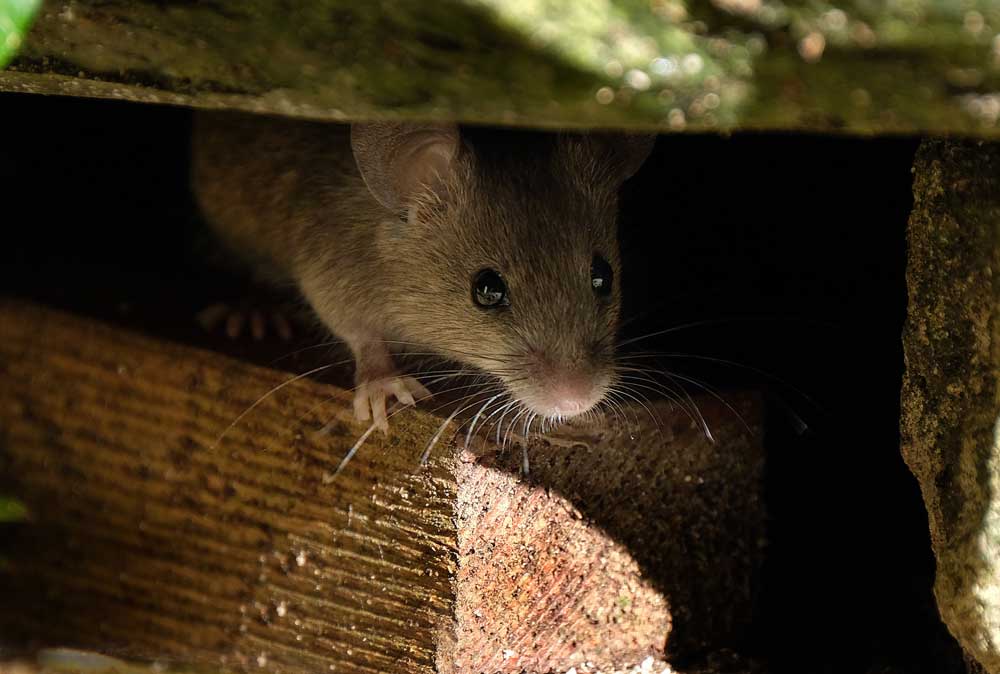
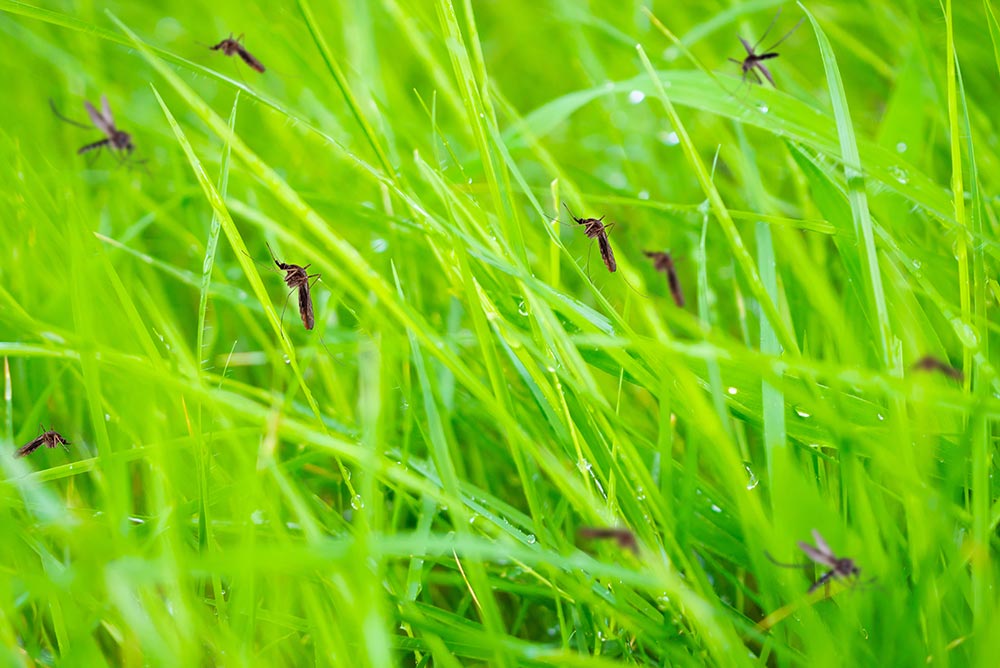
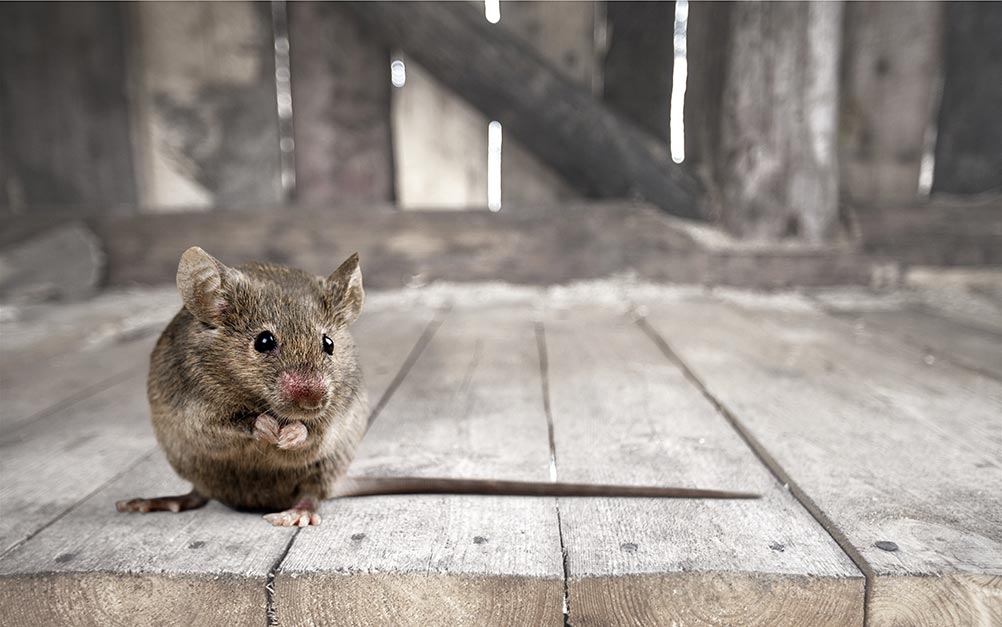
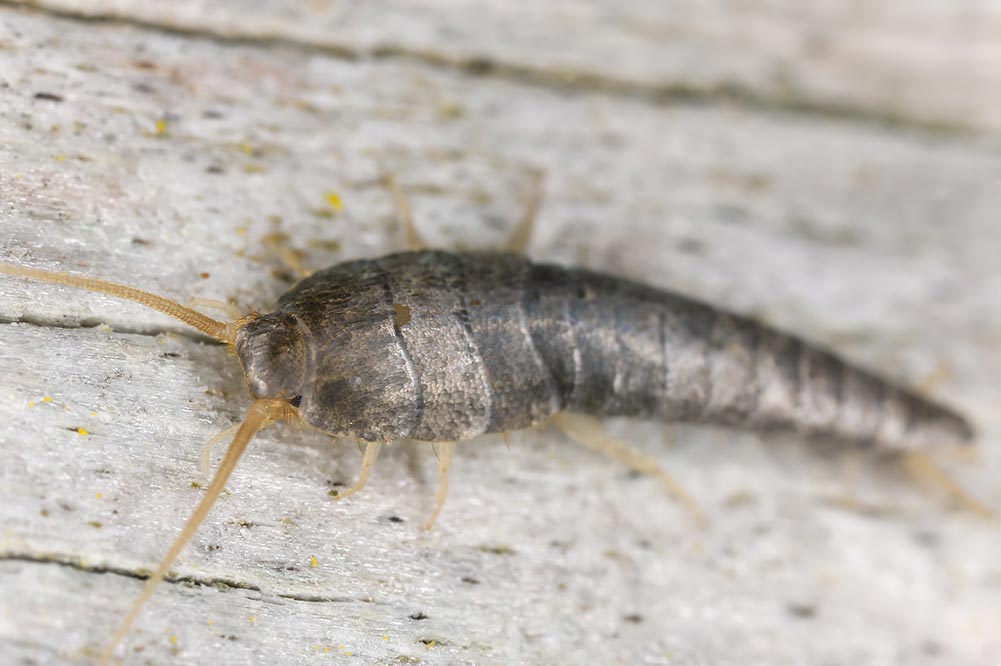
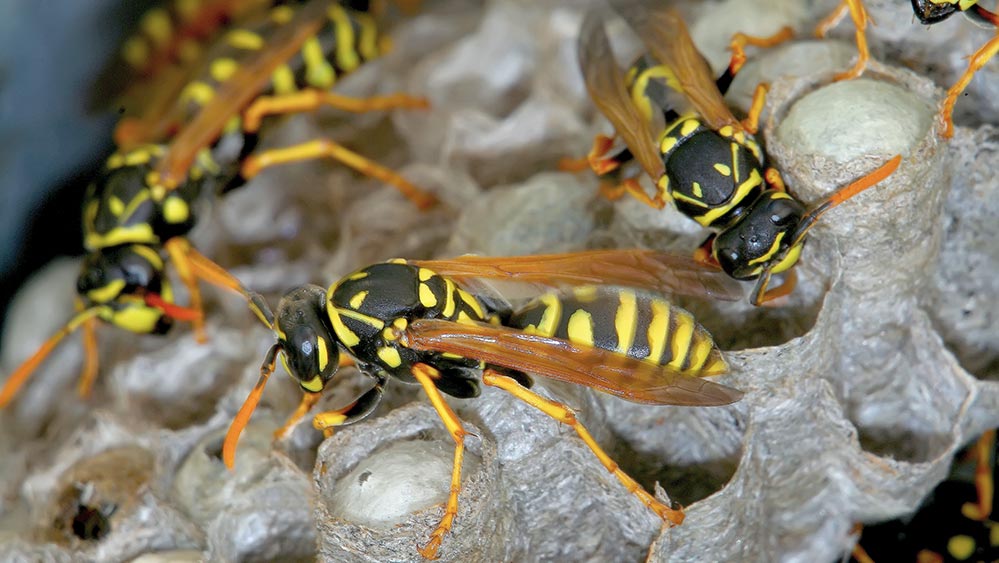
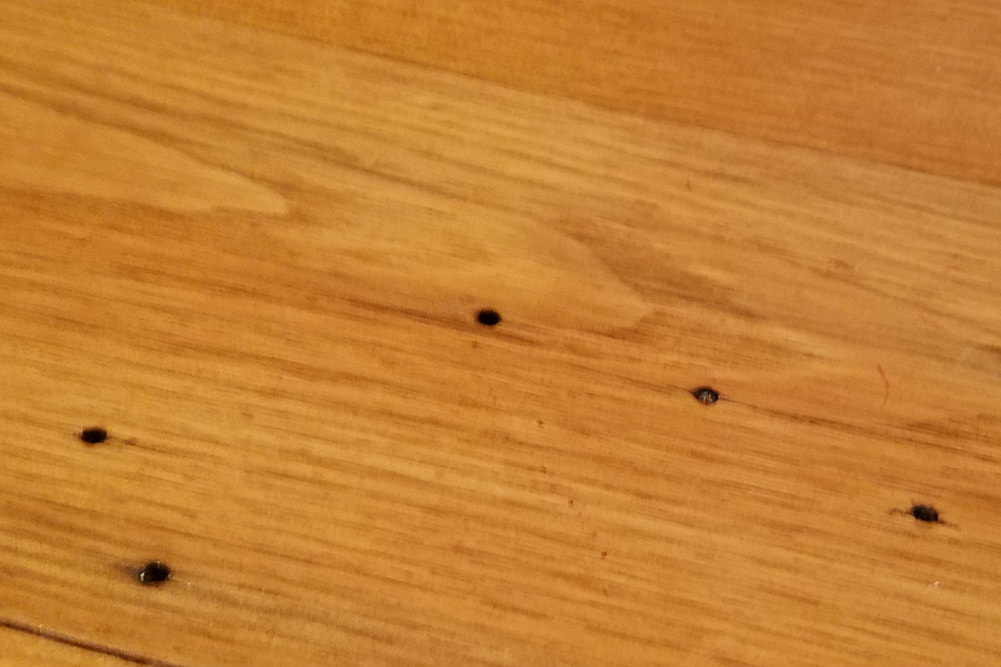
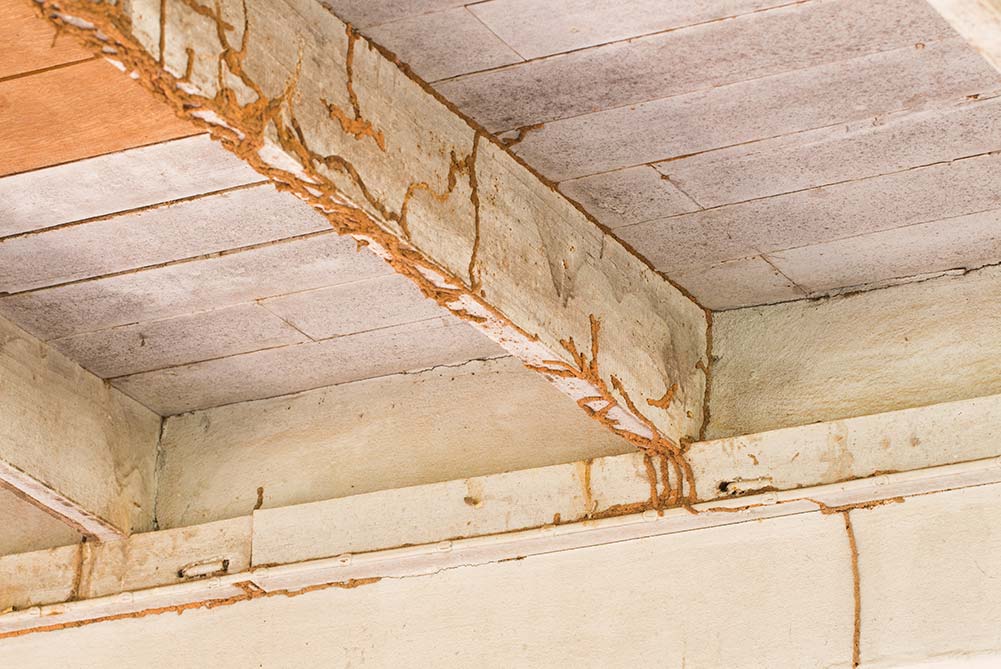




 RSS Feed
RSS Feed

